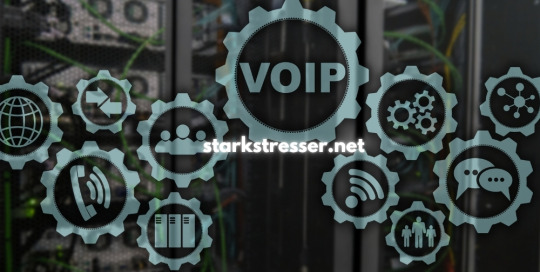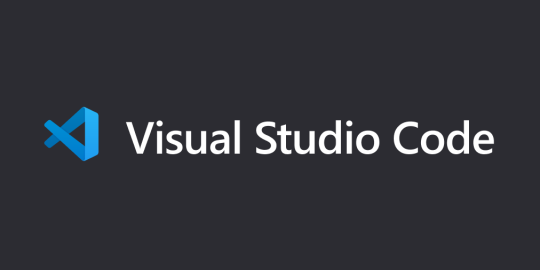#user friendly web application
Explore tagged Tumblr posts
Text
What are the best practices for handling form validation in a web application
Master Form Validation: Best Practices for Web Applications
The cost of poor user experience is staggering, with studies showing that 70% of users abandon forms due to errors. Effective form validation is crucial for delivering a seamless experience, ensuring both data integrity and enhanced security. This article outlines essential best practices for handling form validation in web applications.
Client-Side Validation: The First Line of Defense
JavaScript's Role
JavaScript plays a vital role in creating a responsive user experience. By using it for client-side validation, developers can provide immediate feedback. Common techniques include:
Regular Expressions: Validate email addresses and other patterns.
Length Checks: Ensure fields like passwords meet minimum requirements.
For example, a simple regex for emails could look like this:const regex = /^[^\s@]+@[^\s@]+\.[^\s@]+$/; const isValidEmail = regex.test(emailInput.value);
HTML5's Built-in Validation
HTML5 offers built-in attributes that simplify form validation. With attributes such as required, pattern, min, and max, developers can quickly add basic validation rules. For instance:<input type="text" required pattern="[A-Za-z]{2,}">
This input requires at least two letters, providing a quick validation method.

Enhancing UX with Real-time Feedback
Providing clear and helpful error messages is essential for guiding users. A well-designed error message could state, “Please enter a valid email address. Example: [email protected].” This approach helps users understand what went wrong.
Server-Side Validation: The Crucial Second Layer
Why Server-Side Validation is Essential
Client-side validation is only the first step. It can be bypassed easily, making server-side validation critical for security and data integrity. If server-side checks are not in place, malicious users can manipulate data.
Choosing the Right Server-Side Validation Technique
When it comes to server-side validation, different approaches exist:
Using Frameworks: Many web frameworks like Python's Django or Node.js's Express offer built-in validation tools.
Custom Functions: Developers can write tailor-made validation functions for specific needs.
For instance, in Express, you might validate an email like this:const express = require('express'); const app = express(); app.post('/submit', (req, res) => { if (!validateEmail(req.body.email)) { return res.status(400).send('Invalid Email'); } });
Data Sanitization
Sanitizing user inputs before processing them on the server is a must. This practice protects against harmful injections, ensuring that only safe data is handled.
Advanced Validation Techniques
Asynchronous Validation
Asynchronous validation can handle tasks that require external lookups, such as checking for duplicate emails or verifying credit card numbers. For example, an API call can validate an email's uniqueness in real-time.
Custom Validation Rules
Creating custom validation rules allows handling complex scenarios unique to specific applications. This could involve defining a rule that ensures a specific range of dates for an event.
Integrating with Third-Party Services
Integrating third-party services for verification can boost reliability. Services for address verification or payment processing provide added security and user trust.
Best Practices for Error Handling and User Experience
Providing Clear and Concise Error Messages
Clear error messages help users. Instead of vague messages like “Input error,” use specific guidance, such as “Password must be between 8 and 16 characters.”
Implementing User-Friendly Feedback Mechanisms
Visual cues enhance the user experience. Color-coded input fields or icons can indicate errors even before submission. For example, a red border around a field signals an issue effectively.
Accessibility Considerations
Ensuring accessibility is vital. Implementing forms that are screen-reader friendly and compliant with WCAG guidelines helps accommodate users with disabilities. This includes using ARIA roles and ensuring keyboard navigability.
Maintaining and Testing Form Validation
Automated Testing
Automated testing frameworks are invaluable for validating form functionality. Tools like Jest or Mocha can run tests to ensure validation rules work as intended.
Regular Code Reviews
Regular team code reviews are crucial. They catch potential validation errors early, ensuring the system remains robust and user-friendly.
Monitoring and Logging
Setting up monitoring for form submissions can highlight common errors, allowing for ongoing improvements. Logging provides insight into how users interact with forms, guiding necessary adjustments.
Conclusion: Building Robust and User-Friendly Forms
Mastering form validation is essential for any successful web application. By focusing on client-side and server-side validation, using advanced techniques, and enhancing user experience, developers can create forms that not only function well but also delight users.
Start implementing these best practices today to strengthen your forms and improve overall application performance. Keeping an eye on future trends, such as AI-powered validation, will further enhance your approach to form validation.
0 notes
Text
From a company’s expertise to a strong portfolio, transparency and cost, considering several factors can help you choose reliable web app development services.
#web application development services#web application for business#build web application#web app features#scalability of web applications#user-friendly web apps
0 notes
Text

Web Application Development Services
Primathon’s web application development team uses the latest technologies and frameworks to deliver excellent CX. With our expert development services, you can transform your ideas into powerful, user-friendly web applications. We offer custom web solutions that are scalable, secure, and tailored to meet your business needs.
#web application development#user-friendly web app#website development services#custom web solutions#Primathon
1 note
·
View note
Text

With a focus on innovation and user experience, we deliver high-quality apps that drive results.
For more info visit on www.expertcodelab.com or Give a call on +91 7303798986
#digitalmarketing#socialmedia#expertcodelab#web development#app development#noida#serviceprovider#digitalmarketingagency#trending#online promotion#mobile application development#user friendly#software development#success
0 notes
Text
Enhancing Digital Success: DCUB3 is your Reliable Web Development Company in Singapore
#Having a strong online presence is essential for companies to succeed in Singapore's vibrant online community. Enter DCUB3#a renowned Web Development Agency with a focus on digital solutions#SEO#and site design. They have earned a reputation as a reliable partner for companies looking to build a strong online presence because of the#we will look at how DCUB3 has established itself as a top web development agency in Singapore#providing excellent services including web design and SEO.#Web Development Singapore: Crafting digital excellence -#DCUB3 is a reputable web development company in Singapore that specializes in providing top-notch web development services. Their team of q#whether it be a corporate website#e-commerce platform#or online application. They produce responsive#very user-friendly#and aesthetically attractive websites that create a lasting impression by using the most recent industry standards and best practices.#SEO Services Singapore: Increasing Online Visibility -#Having a website alone is insufficient in the fiercely competitive digital environment of today. Businesses want efficient SEO techniques t#and DCUB3 provides thorough SEO Services in Singapore. They assist companies in achieving improved search engine results and more online ex#on-page optimization#link building#and other areas. DCUB3 makes sure that its customers' websites are optimized to draw organic traffic and encourage conversions by keeping u#Web Designer Singapore: Creating digital masterpieces -#As one of the Web Design Agency in Singapore#DCUB3 is aware of how important aesthetics are in attracting and holding online users' attention. Their team of professional web designers#from attractive layouts to clear user interfaces. They make sure that every component of the website improves user engagement and promotes#Overall#DCUB3 has made a name for itself as a reliable web development company providing a wide variety of Singapore Seo Services including web des#businesses may realize their full potential in Singapore's competitive digital market by using their knowledge of web development#and web design. Count on DCUB3 to elevate your online presence and spur digital success.
0 notes
Link
#Finance Saas Products#Financial Saas Application Review#Important Features for Protecting Your Wealth#Investment Management Tools#Investment Management Web App#Secure Document-Sharing Platform#Secures Your Financial Future#User-Friendly Interface#Web-Based Financial Management Platform#Web-Based platform for Maintaining a Repository
1 note
·
View note
Text
STARKSTRESSER -PLATİN

In a digital landscape where stability and performance are paramount, StarkStresser offers cutting-edge solutions designed to elevate your online presence. Whether you are a gamer seeking a competitive edge or a developer ensuring robust application performance, our comprehensive suite of tools—including advanced IP stressers and free IP booters—caters to a multitude of needs. With a focus on delivering seamless connectivity and unparalleled reliability, StarkStresser empowers users to effectively test their networks under simulated conditions.
Stresser
A stresser is an online tool designed primarily for testing the resilience of networks and servers against various types of attacks. It simulates Distributed Denial of Service (DDoS) attacks, which can overwhelm a server by flooding it with traffic, and it is crucial for organizations to understand how resilient their infrastructure is to such threats. Using a stresser can help businesses identify vulnerabilities in their systems and improve security measures.
However, it's essential to note that the ethical use of stress testing tools is paramount. Users should only test devices and networks they own or have explicit permission to test. Misuse of a stresser can lead to legal consequences, including potential fines and imprisonment.
When searching for a reliable ip stresser, it’s vital to look for one that provides clear usage guidelines and supports ethical considerations. Many reputable services also offer features that allow users to simulate attacks within controlled environments, enabling businesses to prepare better for real-world cyber threats.
In the realm of cybersecurity, understanding the capabilities of a stresser can empower organizations to actively defend against potential attacks. Be sure to research any selected tool thoroughly, ensuring it aligns with your security testing needs and ethical standards.
Ip Stresser
An IP stresser is a tool or service designed to test the resilience of a network or website against various types of stress attacks. Often utilized by web administrators and security professionals, an IP stresser can simulate considerable traffic to help evaluate the potential vulnerabilities of a specific IP address or server. This testing can help organizations strengthen their defenses against actual malicious attacks.
However, it is crucial to note that the use of an ip stresser should always be conducted ethically and legally. Using it to attack or disrupt services without authorization is illegal and can lead to severe consequences. Always ensure you have the necessary permissions to conduct such tests on a network or system.
In the context of stress testing, there are various types of IP stressers available, which can differ in their methods and intensity. Some users prefer IP stressers that offer adjustable parameters to customize the attack, while others might seek those with user-friendly interfaces that can deliver quick results.
Another vital aspect to consider is the choice between premium and free IP stressers. While free versions can be tempting due to their no-cost nature, they often come with limitations in terms of performance and reliability. Paid options typically provide more robust features, better support, and a more reliable service, making them suitable for serious testing purposes.
As you explore various IP stressers, it’s essential to choose one that aligns with your specific needs, whether you're looking for free solutions or comprehensive paid services. Always prioritize using reputable services to ensure that your testing complies with legal requirements and ethical standards.
Ip Stresser Free
When it comes to stress testing your server or network, finding an ip stresser free option can be appealing for many users. Free IP stress testing services, commonly known as stresser tools, offer a way for individuals to test the resilience of their networks without incurring any costs. However, it is crucial to be aware of the risks and limitations associated with these free options.
These services typically have a limited capacity compared to their paid counterparts, which may restrict the intensity of the tests you can perform. Users should also consider the legality and ethical implications of using such tools, as testing without permission can result in significant legal troubles.
Moreover, relying on an ip booter or free stresser might expose your network to potential vulnerabilities, including the risk of data breaches or exposure to malicious attacks. Therefore, it’s advisable to conduct thorough research and choose reputable providers when selecting an ip stresser free option.
In conclusion, while free stresser tools might seem like an appealing solution, always prioritize security and legality by using these tools responsibly and considering paid services for more comprehensive testing solutions.
Ip Booter
An IP booter is a specialized tool designed to perform Distributed Denial of Service (DDoS) attacks by overwhelming a specific target IP address with excessive traffic. The idea is to disrupt the target's online services, making them unavailable for legitimate users. Booters have gained popularity in certain circles, particularly within gaming communities, where individuals seek to retaliate against others by interrupting their connection.
It's important to distinguish between legitimate use and malicious intent. There are instances where individuals may seek to test the robustness of their own networks or those for whom they have explicit permission. However, the use of IP booters against unsuspecting targets is generally illegal and unethical. Many countries have strict laws against unauthorized DDoS attacks, which can lead to severe penalties.
In addition to the ethical concerns, users should be wary of utilizing free ip booter, as they often compromise security. Free services may expose users to malware, phishing attempts, and data breaches. For those considering a stresser or IP stresser, prioritizing reputable and secure services is crucial, ensuring that they comply with legal standards and best practices in cybersecurity.
In conclusion, while the allure of using an IP booter may be tempting, it is essential to recognize the potential consequences—both legally and ethically. Responsible internet usage and adherence to laws protect not only individuals but the entire online community.
993 notes
·
View notes
Text
Pillowfort now has over 150,000 registered users!

Hi everyone. We are very excited to announce that as of June 2023 we now have over 150,000 registered users who have made our little platform their home.

Pillowfort launched in 2017 and we weren’t sure where the journey would take us. What we did know, however, was that we want our platform to be known as a user-friendly safe space on the internet for creativity, communication, and content-sharing.
Pillowfort’s success and existence would not be possible if it wasn’t for your continued support. By funding us, telling your friends about Pillowfort, signing in to Pillowfort, or even just giving us feedback: You have made a difference. You have made a direct impact in keeping us online. Thank you so much.
As each day passes we are watching in real time more platforms become restrictive. The censorship of BIPOC, LGQBTIA2S+, NSFW artists, and sex workers in social media spaces continues. Some platforms have even disappeared without giving their users notice.
We realize now more than ever our platform needs to be the counterbalance. We are one of the few platforms available that is staunch about moderating bigotry and hate speech, and we will continue to provide an outlet for fans and creators to have freedom of expression. We’re not going anywhere– as long as we have your help.
For those new here, Pillowfort has been entirely user funded since the beginning. That means we have received no assistance from large investors or venture capital funding. While it is much more difficult to operate & grow a platform with limited funding, it keeps us accountable to the desires of our users instead of investors or shareholders. Your support has helped us continue to compensate our teams working on the platform, begin development of a progressive web app, and finally release our optional subscription service: Pillowfort Premium.
In the next few weeks we will be sharing how we are going to tackle abandoned/modless Communities, provide an update to our discussions regarding AI Generated Images on Pillowfort, and release a Site Update with several bug fixes. We are also still tackling our 2023 Development Goals.
Development Goals 2023
Goals with priority release / currently under development:
Additions to subscription service: credit-only subscriptions, applying custom credit amounts
Post Drafts
Post Queue & Scheduling
Goals for completion by the end of this summer:
Progressive Web App for mobile with push notifications (!!)
Rebuild the post image uploader widget to be more good and less bad
Rebuild the way notifications are logged & retrieved in the back-end to be more efficient & reduce errors
Onboarding Guide for new users
Goals for completion by end of 2023:
Paid post promotions
Multi-account management/linking
2-Factor Authentication
Community Membership Applications
Community Topics/Organization Options
From the bottom of our hearts thank you again! We hope our community continues to grow and we are excited to share as many updates as we are able to. Stay tuned.
295 notes
·
View notes
Text
Ooo my brain requires multitasking during this talk so I'm gonna be spicy and start some Disk Horse with a Warmed Take that won't piss everyone off, but will mildly annoy everyone
I'm like 99% sure that the only reason why people view all linux distros as this esoteric black box of a godlike operating system for powerusers is because linux users advising them how to use it have WAY higher standards than necessary for what "baseline functionality" is.
Ubuntu literally has more functionality and is more user friendly than either macOS or windows without any modification or complicated installs and applications. A huge part of this is straight up because of the open source environment, which means less boundaries to installing whatever software you want without worrying about constant internet access, license codes, centralized accounts, etc etc etc. And that benefit is immediately apparent! Setting up windows is a multihour affair. MacOS works straight out of the box, but will hit you with a brick wall of accessibility every once in a while. Introductory linux packages have none of that, and that's all most people want- free, easy to use office applications, smooth web browsing, and the freedom to install the software they want for their own needs (which has gotten way better for linux recently, esp with things like Proton). A basic Ubuntu or Mint install will provide all of that.
If your explanation to someone about why they shouldn't use ubuntu when they're fresh off windows and trying to find an alternative involves a breakdown of snap vs apt and the backend functionality of how packages are maintained for each one, you're part of the problem LOL
And if your reaction to that is "well they SHOULD care" they're already caring far more than the average person by switching to linux.
89 notes
·
View notes
Text
Cheap Windows VPS Server - Reliable and Budget-Friendly
For businesses and individuals seeking reliable hosting solutions, Virtual Private Servers (VPS) provide an ideal middle ground between shared hosting and dedicated servers. Among these, Cheap Windows VPS Server solutions stand out for their cost-effectiveness and robust performance. These servers cater to a wide array of needs, including application hosting, website management, and secure data storage, making them a popular choice for small businesses and developers.

Advantages of Windows VPS Servers
When it comes to hosting, flexibility and control are paramount. Best Windows VPS Servers offer enhanced control over server configurations, allowing users to customize settings to meet specific requirements. These servers run on Windows operating systems, providing compatibility with various software and applications that require a Windows environment. Their user-friendly interface and robust support system make them a go-to option for those who prioritize efficiency and performance.
Why Opt for Budget-Friendly Hosting?
Finding a balance between affordability and quality is crucial. A Cheap Windows VPS Server offers exceptional value without compromising reliability. These servers come with dedicated resources like CPU, RAM, and storage, ensuring consistent performance even during high-traffic periods. Moreover, they provide scalability, allowing users to upgrade as their business grows, all while keeping costs manageable.

Exploring Linux VPS Hosting Alternatives
While Windows VPS servers are an excellent choice, Cheap Linux VPS Hosting serves as a strong alternative for tech-savvy users comfortable with Linux-based systems. Linux VPS hosting is known for its stability, security, and lower licensing costs, making it a viable option for developers and businesses working with open-source applications. Its lightweight nature ensures faster load times and enhanced performance, especially for websites and apps requiring minimal resources. In today’s digital landscape, selecting the right hosting solution can significantly impact your online presence and operational efficiency. Whether you choose a Cheap Windows VPS Server or explore the benefits of Cheap Linux VPS Hosting, the key lies in aligning your choice with your technical needs and budget. For a seamless hosting experience that combines reliability and affordability, explore the offerings at AKL Web Host—a trusted name in the industry.
#cheap windows vps server#windows vps server#cheap linux vps hosting#vps hosting#unlimited web hosting plan#best web hosting for ecommerce#dedicated server hosting package#best dedicated hosting services for 2024#cheap wordpress hosting#best wordpress hosting#cheap dedicated server#best windows vps servers
3 notes
·
View notes
Text
Top Online Business Ideas to Consider in 2025

Dubai's dynamic business environment offers numerous online opportunities for aspiring entrepreneurs. Here are some of the top online business ideas to consider in 2025:
E-commerce Store: Launch an online platform to sell products directly to consumers. With the UAE's e-commerce market projected to reach $9.2 billion by 2026, there's significant potential here. Focus on a specific niche, obtain the necessary e-commerce license, and develop a user-friendly website. Partnering with reliable delivery services and implementing effective marketing strategies will be crucial.
Dropshipping Business: Manage an online store without holding inventory. When a customer makes a purchase, the order is forwarded to a supplier who ships the product directly to the customer. This model reduces upfront costs and is gaining popularity globally.
Digital Marketing Agency: Offer services like social media management, SEO, and content creation to help businesses enhance their online presence. As companies increasingly recognize the importance of digital marketing, there's a growing demand for such expertise.
Online Education and Tutoring: Provide virtual classes or tutoring sessions in subjects you're knowledgeable about. The rise of online learning platforms has made education more accessible, and there's a consistent demand for quality instructors.
Content Creation and Blogging: Create engaging content through blogs, videos, or podcasts. Monetize your content via advertising, sponsorships, or affiliate marketing. Building a loyal audience can lead to significant revenue opportunities.
Affiliate Marketing: Promote products or services from other companies and earn a commission for each sale made through your referral. This model is cost-effective and can be lucrative with the right strategy.
App Development: Develop mobile or web applications to meet specific user needs. With the increasing reliance on digital solutions, innovative apps can gain rapid popularity.
Virtual Assistant Services: Offer administrative support to businesses or individuals remotely. Tasks can range from managing emails to scheduling appointments, providing flexibility for both parties.
Online Consulting: Leverage your expertise in a particular field to offer consulting services online. Whether it's business strategy, health, or finance, many are willing to pay for professional advice.
Graphic Design Services: Provide design solutions for logos, marketing materials, or websites. As businesses aim to stand out visually, skilled graphic designers are in high demand.
Social Media Influencer: Build a strong presence on platforms like Instagram or YouTube. With a substantial following, you can collaborate with brands for promotions and sponsorships.
Online Fitness Coaching: Offer virtual fitness classes or personalized training plans. The health and wellness industry continues to thrive, and many prefer the convenience of online sessions.
Stock Photography: Capture high-quality images and sell them on stock photography websites. Businesses and creators constantly seek quality visuals for their projects.
Handmade Crafts Online Store: Sell handmade items like jewelry, art, or home decor through an online platform. There's a market for unique, handcrafted products that can't be found in mass production.
Subscription Box Service: Curate and deliver boxes of niche products to subscribers regularly. This model has gained traction in various industries, from beauty products to gourmet foods.
Language Translation Services: Provide translation services for documents, websites, or media content. In a globalized world, effective communication across languages is essential.
Online Travel Agency: Assist clients in planning and booking their travel experiences. With the resurgence of travel, personalized planning services are valuable.
Virtual Event Planning: Organize and manage online events, from webinars to virtual conferences. As virtual events become more common, skilled planners are needed to ensure their success.
Print on Demand: Design custom apparel or merchandise and partner with suppliers who print and ship items as orders come in. This reduces the need for inventory and allows for creative flexibility.
Online Real Estate Brokerage: Facilitate property transactions through a digital platform. With the real estate market's evolution, online brokerages offer convenience to buyers and sellers.
Embarking on an online business in Dubai offers numerous advantages, including a strategic location, supportive government policies, and a tech-savvy population.
By selecting the right niche and implementing effective strategies, you can build a successful venture in this thriving market.
2 notes
·
View notes
Photo

🚀 Empowering Your Digital Transformation 🌐✨
Transform your digital presence with SazM—your trusted partner in building secure 🔒, scalable 📈, and high-performing ⚡ web experiences.
We specialize in crafting custom websites 🖥️, e-commerce platforms 🛒, and dynamic web applications 🏗️ that align with your business goals 🎯 and captivate your audience 👥. With a focus on cutting-edge technology 🛠️, user-friendly design 🎨, and performance optimization ⚙️, we ensure that your website not only looks great 👀 but also delivers seamless functionality 🚀 and drives results 📊.
Whether you’re launching a new business 🏢, upgrading your existing website 🔄, or seeking reliable maintenance 🛡️, we’re here to help you succeed online!
🌟 Our Services:
✅ Custom Web Development
Responsive, mobile-friendly designs 📱
SEO-optimized for better search rankings 🔍
Fast-loading, high-performance interfaces ⚡
🛒 E-commerce Solutions
User-friendly store designs 🛒
Secure payment gateways 💳
Efficient inventory management systems 🛆
📊 Web Application Development
Scalable, high-performance apps 🚀
Intuitive dashboards for real-time analytics 📊
Streamlined solutions for business efficiency 🏷️
🔧 Website Maintenance & Support
Regular updates & performance optimization 🔄
Continuous security monitoring 🔒
Reliable, ongoing technical support ⚙️
🎯 Why Choose SazM?
Future-Proof Solutions: Stay ahead with the latest tech. 🔧
Tailored Strategies: Your business goals come first. 🎯
Proven Expertise: We deliver beyond expectations. 🏆
Affordable Excellence: High-quality solutions at competitive rates. 💸
📩 Let’s bring your vision to life! Get a free quote today!
👉 sazm.in
2 notes
·
View notes
Text
Visual Studio vs Visual Studio Code

Today, I want to talk about a topic that often confuses many developers and me including when I first started: the difference between Visual Studio and Visual Studio Code. Similar names, and the same logo shape but what makes the two different? Let's talk about it~! ✨

Visual Studio and Visual Studio Code (often abbreviated as VS and VS Code, respectively) are two distinct development environments both made by Microsoft, and both aimed at providing developers with the tools they need to build cool applications!


Visual Studio
Visual Studio is a full-featured integrated development environment (IDE) that helps people create other computer programs. It has a lot of different tools that can help with things like writing code, finding mistakes in code, testing programs, and putting the finished program out for other people to use.
Visual Studio can work with different programming languages like C#, VB.NET, F# and C++. It might take some time to learn how to use Visual Studio because it has a lot of features, but once you get the hang of it, you'll be able to create really cool and complex computer programs with it.


Visual Studio Code
Visual Studio Code is a lightweight, open-source code editor that provides developers with a customizable environment for building and debugging applications. It supports a wide range of programming languages, including JavaScript, TypeScript, Python, and Java.
The interface of VS Code is intuitive and straightforward, making it easy for new users to start working with it quickly. Very beginner-programmer-friendly, in my opinion.

Key Differences
Visual Studio is an IDE
VS Code is a code editor
Visual Studio is primarily designed for building large-scale applications
VS Code is geared towards web development, scripting, and smaller projects
Visual Studio has an extensive range of extensions and add-ons available to expand its capabilities
VS Code has a vast library of free and open-source extensions available in its marketplace, making it a flexible and cost-effective option
Visual Studio Code is known for its lightweight and speedy performance. It consumes fewer resources than Visual Studio, making it an excellent option for developers who are working on lower-end machines

All this info!! Which to pick for my next project?
It depends on what you're making and how big and complicated it is! 🤔
If you're making something really big project, you'll probably want to use Visual Studio because it has a lot of tools to help you. But if you're making something smaller or working on a website, then Visual Studio Code might be better for you.
At the end of the day, it's up to you to decide which one you prefer! 😉👍🏾

That's all and thank you for reading! Hope you learn something new! 💻🙌🏾💗
#xc: programming blog post#resources#codeblr#progblr#studyblr#coding#programming#studying#computer science#comp sci#technology#programmer#coding resources#coding study#tech#visual studio#visual studio code#vscode#code editor#my resources
123 notes
·
View notes
Text
Why do we choose best website development company in Indore ?
Take into account the following elements while selecting a best website development company in Indore:
Experience and Portfolio: Seek out businesses that have a solid track record and a varied portfolio that highlights their work in a range of sectors.
Technical Know-How: Verify that the business is knowledgeable about the newest programming languages and online technologies.
Customer Testimonials and Reviews: Good comments from prior customers can reveal information about the dependability and caliber of the business's work.
Range of Services: A well-rounded strategy is indicated by a full range of services, including web design, development, SEO, and digital marketing.
Support and Communication: Successful project execution depends on both continuous support and efficient communication.
Knowledge and Experience Since each of these organizations has years of experience in the field, they are able to create plans that work by using tried-and-true techniques. Their teams are made up of knowledgeable experts who keep up with the newest developments in web development trends and technologies.
Customer-focused methodology These businesses place a high value on knowing the particular needs and objectives of each of its clients. They guarantee that customers receive individualized solutions that provide outcomes by customizing their services accordingly.
Leading Industries Provided
Numerous industries are served by the top Indore website development company, including:
Healthcare: Creating patient portals and mechanisms for scheduling appointments.
Education: Creating school administration systems and e-learning platforms.
E-commerce: Establishing dependable internet shops with smooth purchasing processes.
Real estate: Creating portals with sophisticated search filters for property listings.
Hospitality: Creating websites for lodging facilities, dining establishments, and tour operators.
Finance: Establishing safe internet banking and financial services platforms.
Nonprofits: creating websites to raise money and awareness of causes.
The top Indore website development company offers a broad range of services to meet various business requirements:
Development of Custom Websites
creation of custom websites that complement the identity of the brand.
use the newest technologies to create websites that operate well.
Development of E-Commerce
development of e-commerce systems with a wealth of features and user-friendly navigation.
combining user-friendly interfaces, inventory management systems, and secure payment channels.
Systems for managing content (CMS)
creation and modification of content management system platforms, such as Magento, Joomla, and WordPress.
Assistance and instruction to enable consumers to take charge of their websites on their own.
Web design that is responsive
creating websites that fluidly adjust to different screen widths.
guaranteeing a unified and captivating user experience across platforms.
Search Engine Optimization (SEO)
Implementation of SEO-friendly website structures and meta tags.
Optimization for speed, mobile-friendliness, and content relevance.
Web Application Development
Development of custom web applications tailored to specific business processes.
Scalable solutions that grow with the business.
The top Indore website development business is distinguished by its technical expertise, customer-focused methodology, and dedication to producing outstanding outcomes. Working with a premier Indore website development company can help you turn your idea into a reality, whether you're a startup trying to get your name out there or an existing firm hoping to grow. Make informed decisions, and you'll see your company flourish in the digital sphere.

#best website development company in Indore#website#website design#web design#seo services#web development#digital marketing#best website designing company in indore#usa#usa news#web design company#seo friendly website design#web hosting
2 notes
·
View notes
Text
macOS Dock Inspired Navigation Bar in Pure CSS
This is a pure CSS approach to creating a responsive, animated, interactive navigation bar inspired by macOS dock interfaces. It can be used to generate creative and user-friendly bottom navigation on your web app, where nav items (typically application icons) dynamically resize and reveal tooltips upon mouse interaction. How to use it: 1. structure your HTML to include the dock and your app…
4 notes
·
View notes
Text
Burp Suite
This week I wanted to cover a powerful tool that assists in web application security. Burp Suite is a well-known tool developed by PortSwigger. Burp Suite is an integrated platform used to test web application security by using a variety of different features it provides. One of these features Burp Suite has is an intercepting proxy that allows you to inspect and modify traffic between the browser and the server at each step. Scanner allows you to automatically detect certain vulnerabilities like SQL injection and cross-site scripting. Intruder automates custom attacks to test certain security parameters, generally passwords. Repeater allows for manual modification and replaying of edited requests for more in-depth testing.
All in all Burp Suite provides a simplified way and process for identifying and discovering vulnerabilities. It has a very user-friendly interface that assists in applying all the different features and makes it easy to learn. It also allows for user consummation that allows users to create custom rules and integrate third-party extensions. It is one of the most renowned tools in cyber security and brings an active and engaging community along with it. Burp Suite I is something I highly recommend to those striving to develop their cyber security skills to get their hands on. Not only will you become more proficient in the tool itself, but it will also teach you about how web applications and servers work.
Source:
2 notes
·
View notes